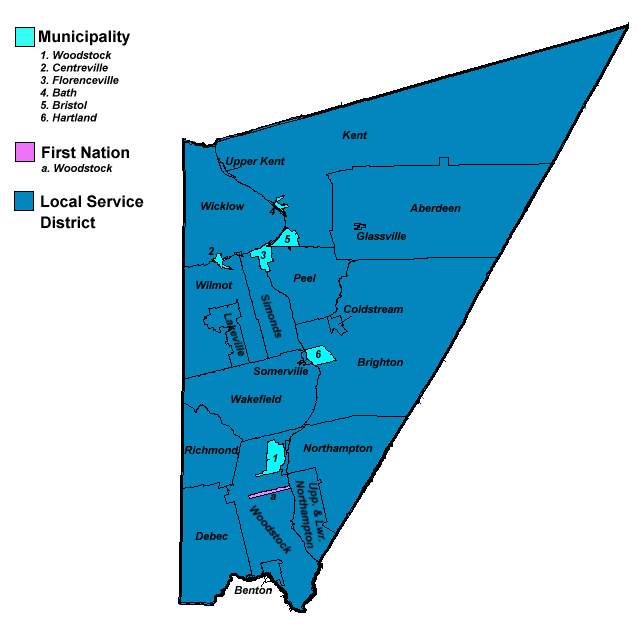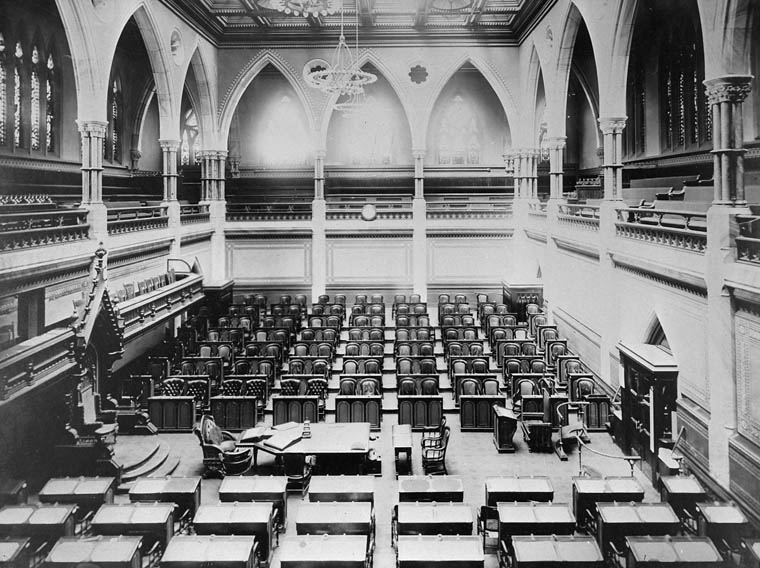|
Benjamin Franklin Smith
Benjamin Franklin Smith (May 8, 1865 – May 19, 1944) was a produce dealer and political figure in New Brunswick, Canada. He represented Carleton County in the Legislative Assembly of New Brunswick from 1903 to 1908, from 1915 to 1920 and from 1925 to 1930 as a Conservative member. Smith represented Victoria-Carleton in the House of Commons of Canada from 1930 to 1935 as a Conservative member and served in the Senate of Canada The Senate of Canada (french: region=CA, Sénat du Canada) is the upper house of the Parliament of Canada. Together with the Crown and the House of Commons, they comprise the bicameral legislature of Canada. The Senate is modelled after the B ... from 1935 to 1944. He was born in Jacksonville, New Brunswick. Smith ran unsuccessfully for a federal seat in 1908, 1911 and 1921. He served in the province's Executive Council as Minister of Public Works from 1916 to 1917. Smith died in office at the age of 79. References * * 1865 births ... [...More Info...] [...Related Items...] OR: [Wikipedia] [Google] [Baidu] |
New Brunswick
New Brunswick (french: Nouveau-Brunswick, , locally ) is one of the thirteen Provinces and territories of Canada, provinces and territories of Canada. It is one of the three Maritime Canada, Maritime provinces and one of the four Atlantic Canada, Atlantic provinces. It is the only province with both Canadian English, English and Canadian French, French as its official languages. New Brunswick is bordered by Quebec to the north, Nova Scotia to the east, the Gulf of Saint Lawrence to the northeast, the Bay of Fundy to the southeast, and the U.S. state of Maine to the west. New Brunswick is about 83% forested and its northern half is occupied by the Appalachians. The province's climate is continental climate, continental with snowy winters and temperate summers. New Brunswick has a surface area of and 775,610 inhabitants (2021 census). Atypically for Canada, only about half of the population lives in urban areas. New Brunswick's largest cities are Moncton and Saint John, New Brun ... [...More Info...] [...Related Items...] OR: [Wikipedia] [Google] [Baidu] |
Carleton County, New Brunswick
Carleton County (2016 population 26,220) is located in west-central New Brunswick, Canada. The western border is Aroostook County, Maine, the northern border is Victoria County, and the southeastern border is York County from which it was formed in 1831. The Saint John River bisects the western section of the county. The Southwest Miramichi River flows through the eastern section of the county. Potato farming is a major industry. The scenic town of Hartland is home to the longest covered bridge in the world. Transportation Major Highways * * * * * * * * * * * * * * * * * * * * Census subdivisions Communities There are five incorporated municipalities within Carleton County (listed by 2016 population): First Nations There is one First Nations reserve in Carleton County, the Woodstock_First_Nation: Parishes The county is subdivided into eleven parishes (listed by 2016 population): Demographics As a census division in the 2021 Census of Population conducted by Stat ... [...More Info...] [...Related Items...] OR: [Wikipedia] [Google] [Baidu] |
Legislative Assembly Of New Brunswick
A legislature is an assembly Assembly may refer to: Organisations and meetings * Deliberative assembly, a gathering of members who use parliamentary procedure for making decisions * General assembly, an official meeting of the members of an organization or of their representa ... with the authority to make laws for a political entity such as a Sovereign state, country or city. They are often contrasted with the Executive (government), executive and Judiciary, judicial powers of government. Laws enacted by legislatures are usually known as primary legislation. In addition, legislatures may observe and steer governing actions, with authority to amend the budget involved. The members of a legislature are called legislators. In a democracy, legislators are most commonly popularly Election, elected, although indirect election and appointment by the executive are also used, particularly for bicameralism, bicameral legislatures featuring an upper chamber. Terminology The nam ... [...More Info...] [...Related Items...] OR: [Wikipedia] [Google] [Baidu] |
Conservative Party Of New Brunswick
The Progressive Conservative Party of New Brunswick is a centre-right, conservative political party in the Canadian province of New Brunswick. The party has its origins in the pre-Canadian confederation Conservative Party that opposed the granting of ''responsible government'' to the colony. It has historically followed the Red Tory tradition. The Progressive Conservative Party currently leads the provincial government since 2018 under Premier Blaine Higgs. History Initially, Conservative supporters tended to be United Empire Loyalists and supporters of the business community. In the 1860s, both the Conservative and Liberal parties split over the issue of Canadian confederation, and were replaced by the Confederation Party and the Anti-Confederation Party. By 1870, the pro-Confederation party became generally known as the Liberal-Conservatives or just "Conservatives", and were aligned with the national Conservative Party of Sir John A. Macdonald. The party was aligned with the ... [...More Info...] [...Related Items...] OR: [Wikipedia] [Google] [Baidu] |
House Of Commons Of Canada
The House of Commons of Canada (french: Chambre des communes du Canada) is the lower house of the Parliament of Canada. Together with the Crown and the Senate of Canada, they comprise the bicameral legislature of Canada. The House of Commons is a democratically elected body whose members are known as members of Parliament (MPs). There have been 338 MPs since the most recent electoral district redistribution for the 2015 federal election, which saw the addition of 30 seats. Members are elected by simple plurality ("first-past-the-post" system) in each of the country's electoral districts, which are colloquially known as ''ridings''. MPs may hold office until Parliament is dissolved and serve for constitutionally limited terms of up to five years after an election. Historically, however, terms have ended before their expiry and the sitting government has typically dissolved parliament within four years of an election according to a long-standing convention. In any case, an ac ... [...More Info...] [...Related Items...] OR: [Wikipedia] [Google] [Baidu] |
Conservative Party Of Canada (historical)
The Conservative Party of Canada (french: Parti conservateur du Canada), colloquially known as the Tories, is a federal political party in Canada. It was formed in 2003 by the merger of the two main right-leaning parties, the Progressive Conservative Party (PC Party) and the Canadian Alliance, the latter being the successor of the Western Canadian-based Reform Party. The party sits at the centre-right to the right of the Canadian political spectrum, with their federal rival, the Liberal Party of Canada, positioned to their left. The Conservatives are defined as a " big tent" party, practising "brokerage politics" and welcoming a broad variety of members, including " Red Tories" and " Blue Tories". From Canadian Confederation in 1867 until 1942, the original Conservative Party of Canada participated in numerous governments and had multiple names. However, by 1942, the main right-wing Canadian force became known as the Progressive Conservative Party. In the 1993 federal ... [...More Info...] [...Related Items...] OR: [Wikipedia] [Google] [Baidu] |
Senate Of Canada
The Senate of Canada (french: region=CA, Sénat du Canada) is the upper house of the Parliament of Canada. Together with the Crown and the House of Commons, they comprise the bicameral legislature of Canada. The Senate is modelled after the British House of Lords with members appointed by the governor general on the advice of the prime minister. The explicit basis on which appointment is made and the chamber's size is set, at 105 members, is by province or territory assigned to 'divisions'. The Constitution divides provinces of Canada geographically among four regions, which are represented equally. Senatorial appointments were originally for life; since 1965, they have been subject to a mandatory retirement age of 75. While the Senate is the upper house of parliament and the House of Commons is the lower house, this does not imply the former is more powerful than the latter. It merely entails that its members and officers outrank the members and officers of the Commons i ... [...More Info...] [...Related Items...] OR: [Wikipedia] [Google] [Baidu] |
Department Of Public Works And Highways (New Brunswick)
The Department of Transportation and Infrastructure is a part of the Government of New Brunswick. It is charged with maintenance of government facilities and the province's highway network. From 1855 to 1912, it was known as the Board of Public Works. From 1912 to 1967, it was known as Department of Public Works and Highways. In 1967, its functions were divided between the Department of Public Works and the Department of Transportation. In 2012, the Department of Transportation and the infrastructure management components of the Department of Supply and Services (the successor to the Department of Public Works) were merged back together. To see the ministers : Minister of the Department of Transportation and Infrastructure (New Brunswick) Ferries As part of its duties in maintaining the provincial highway network, the Department of Transportation is responsible for the operation of a number of ferry services. The majority are free of tolls. ;Saint John River and tributaries: ... [...More Info...] [...Related Items...] OR: [Wikipedia] [Google] [Baidu] |
1865 Births
Events January–March * January 4 – The New York Stock Exchange opens its first permanent headquarters at 10-12 Broad near Wall Street, in New York City. * January 13 – American Civil War : Second Battle of Fort Fisher: United States forces launch a major amphibious assault against the last seaport held by the Confederates, Fort Fisher, North Carolina. * January 15 – American Civil War: United States forces capture Fort Fisher. * January 31 ** The Thirteenth Amendment to the United States Constitution (conditional prohibition of slavery and involuntary servitude) passes narrowly, in the House of Representatives. ** American Civil War: Confederate General Robert E. Lee becomes general-in-chief. * February ** American Civil War: Columbia, South Carolina burns, as Confederate forces flee from advancing Union forces. * February 3 – American Civil War : Hampton Roads Conference: Union and Confederate leaders discuss peace terms. * Febr ... [...More Info...] [...Related Items...] OR: [Wikipedia] [Google] [Baidu] |
1944 Deaths
Events Below, the events of World War II have the "WWII" prefix. January * January 2 – WWII: ** Free French General Jean de Lattre de Tassigny is appointed to command French Army B, part of the Sixth United States Army Group in North Africa. ** Landing at Saidor: 13,000 US and Australian troops land on Papua New Guinea, in an attempt to cut off a Japanese retreat. * January 8 – WWII: Philippine Commonwealth troops enter the province of Ilocos Sur in northern Luzon and attack Japanese forces. * January 11 ** President of the United States Franklin D. Roosevelt proposes a Second Bill of Rights for social and economic security, in his State of the Union address. ** The Nazi German administration expands Kraków-Płaszów concentration camp into the larger standalone ''Konzentrationslager Plaszow bei Krakau'' in occupied Poland. * January 12 – WWII: Winston Churchill and Charles de Gaulle begin a 2-day conference in Marrakech. * January 14 – WWII: Sovi ... [...More Info...] [...Related Items...] OR: [Wikipedia] [Google] [Baidu] |




.jpg)


